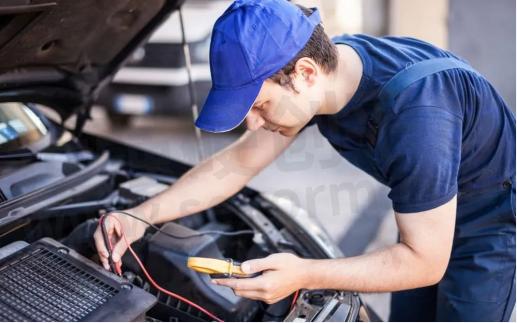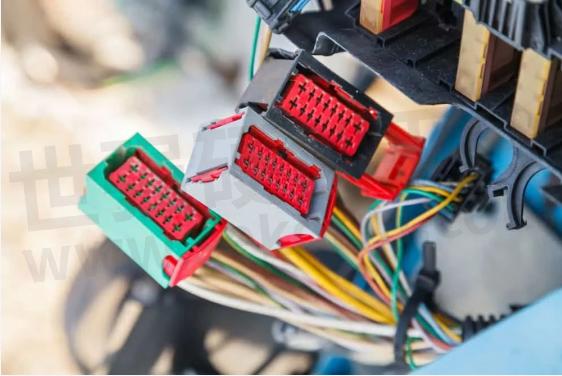Why Do Cars Need Electrical Wiring Harnesses? What Are Their Functions?




The wiring harness is an integral component of a vehicle, despite its massive size averaging around 4 meters in length, comprised of tens of thousands of tiny indivisible components. These components include but are not limited to safety airbags, ABS brakes, signal lights, and essential engine parts. The wiring harness undertakes the task of connecting and powering these functions, without which they would fail to operate correctly. Hence, understanding the functions and importance of automotive wiring harnesses is crucial.
What is an automotive wiring harness?
An automotive wiring harness serves as the central nervous system of a vehicle's electrical circuitry; without it, the vehicle's electrical system would not exist. Essentially, a wiring harness comprises contact terminals (connectors) made from copper, crimped onto Wires and cables, encased with insulation or additional metal housing, and bundled together to form the interconnected components of the circuit.
In essence, automotive wiring harnesses assemble cables, connectors, terminals, and wires to transmit power within a vehicle. In the past, vehicles were purely mechanical and could operate without electricity. However, driving a modern car without electricity would be a miracle. Therefore, automotive wiring harnesses are critical components for any vehicle engine. Without them, current cannot reach the various electrical components of the vehicle The ignition systems of cars, such as starters, chassis, and alternators, all require power. Without automotive wiring harnesses to transmit it, they cannot receive this power. However, merely having an automotive wiring harness is not sufficient for a vehicle. The wires and terminals must also be correctly connected to the electrical components. Understanding these connections is essential for understanding the various wiring harness circuits.

(Modern automobile engines)
Automotive Wiring Harness Circuit
Due to the automotive wiring harness connecting to various electrical components, they possess different connection circuits.These circuits serve different purposes. A typical standard automotive circuit comprises 12:
1. Dashboard illumination lights
2. Gauges
3. Signal lights
4. Heating and air conditioning
5. Horn
6. Parking lights
7. Radio broadcast
8. Brake lights
9. Tail lights
10. Turn signal lights
11. Wipers

Engine Compartment Lamp
Components of Automotive Wiring Harnesses
In addition to circuits, automotive wiring harnesses also consist of various components, including:
Connectors
As the name suggests, connector components link the wiring harness wires to different circuits and power sources. Typical connectors feature male and female ends, which are joined together to transmit electrical current.However, the type of connectors varies depending on the wiring harness. Their terminals also come in different materials, with brass and copper being the preferable ones.

Automotive Cables and Wires
Generally, the function of a fuse is to protect electrical components in the event of a malfunction, such as when the current exceeds a certain level. The characteristic of a wire harness fuse is that the wire easily melts at a certain current level. When it melts, the circuit is disconnected. Thus, it can prevent miscellaneous currents from reaching the vehicle's electrical components, thereby protecting them.

Protecting Electrical Components
Each circuit in the wire harness has its own individual fuse. This means that if one fuse goes bad, it won't affect all components. The fuse box is like a house where you can assemble different fuses inside. It's similar to a distribution board.

Wiring Harness Behind the Dashboard
Relay components in automotive wiring harnesses are used for high-current circuits. They are one of the most crucial components, directly drawing power from the battery. In contrast, some components draw power from other car system components. Therefore, relay components can handle powerful currents even when derived from low-current sources.
Wires
The harness consists of cables or wires as components. Cables or wires are the components seen here. These are typically copper wires, with various circuit measurement variants.
For instance, circuits like horn and headlamp use 1.5-gauge wire. However, circuits like dome lights and door lights use 0.5-gauge wire. When purchasing wires for circuits, confirming the circuit's current value is essential.

Electrical Inspection by an Automotive Electrician
Advantages of Automotive Wiring Harnesses
Having an automotive wiring harness in a car is better than not having one at all. Here are some benefits they bring:
1. Reduced Likelihood of Short Circuits: With automotive wiring harnesses, the probability of circuit short circuits is lower. Why? Because the harnesses assemble multiple wires into neatly arranged bundles. These bundles, while not flexible, are not loose.
2. Quick Setup: Installing a harness might take a considerable amount of time, involving connecting numerous wires and circuits. However, with automotive wiring harnesses, only one unit needs to be connected, and all wires can function. Besides simplifying setup, you also avoid erroneous connections.
3. Improved Fuel Efficiency: Installing automotive wiring harnesses ensures optimized fuel usage for the vehicle. In the long run, this can save you fuel costs.
4. Enhanced Durability: Cars often endure harsh environments, including extreme cold winters, heavy rainstorms, and heatwaves. Despite such conditions, automotive wiring harnesses continue to function. These harnesses are made from robust materials that are resistant to easy breakage.

Close-Up of Automotive Electrical System
How to Select the Right Wiring Harness for Your Vehicle
The following tips will be helpful for you:
1. Check the Circuit Connectors: This is the first and most crucial step. As mentioned earlier, standard harnesses come with 12 circuits, but others may have 18 or 24. It's essential to inspect the circuit connectors to ensure they match your vehicle model.
Additionally, examine the connection method. Is crimping or soldering required, or a combination of both? A combination of both offers optimal performance.
2. Verify if the Harness is Expandable: While a vehicle may only require a harness with 12 circuits, what if you have a car that needs 18 circuits? In such cases, you can either purchase a new harness or opt for an expandable one capable of accommodating additional circuits that can be assembled. Expandable harnesses also offer an advantage as they incur minimal voltage loss.
3. Inspect the Harness Material: You want nothing less than a durable harness. To ensure this, check the harness material, especially the wire and connector materials. Copper is the preferred choice for wires. For connectors, you can choose between copper or brass, with aluminum connectors being used cautiously.

(A mechanic inspecting wiring harnesses)
Conclusion
In summary, the wiring harness in a car serves as a crucial link between the vehicle's electrical system and its various electronic components.It provides power and communication during the operation from one component to another. Without the proper wiring harness, the vehicle's electrical system can encounter numerous issues, including power interruptions, reduced efficiency, and even potential fire hazards if not properly monitored. Regular inspection of the car's wiring harness is essential so that any signs of damage can be detected before more serious problems arise. This ensures a longer lifespan for your wiring harness and helps prevent any unexpected maintenance costs.
- |
- +1 赞 0
- 收藏
- 评论 0
本文由walkonair转载自Kinghelm Official Website,原文标题为:Why do cars need electrical wiring harnesses? What are their functions?,本站所有转载文章系出于传递更多信息之目的,且明确注明来源,不希望被转载的媒体或个人可与我们联系,我们将立即进行删除处理。
相关研发服务和供应服务
相关推荐
Insulation Failure Analysis of Automotive Connectors
The insulation resistance refers to the resistance value presented by the surface or internal leakage current of the insulation part when a voltage is applied to the insulating part of the automotive connector. In this article Greenconn will share the insulation failure analysis of automotive connectors.
Application of FPC/FFC Connectors in Automotive Industry
The use of FPC/FFC connectors in the automotive industry is growing rapidly as vehicles become increasingly reliant on complex electronic systems. These connectors offer a combination of flexibility, reliability, and cost-effectiveness that makes them an ideal choice for a wide range of automotive applications.
Understanding IPEX 1 and IPEX 4 Connectors
IPEX 1 and IPEX 4 connectors are critical components in the field of electronics, providing reliable and compact solutions for a range of applications. Each type of IPEX connector has its specific design, use cases, and advantages, making them integral to modern technology.
HFM® High-Speed FAKRA-Mini – is the Excellent Performing System of “Mini-Coax” Connectors for the Automotive Industry
Rosenberger HFM® - High-Speed FAKRA-Mini – the best performing system of “Mini-Coax” connectors for the automotive industry.
Smiths Interconnect’s L, H and N Series of High-density for Automotive Testing, Meeting Lower Cost and Shorter Lead Times
As automotive test equipment continues to meet the expectations of today’s increasingly complex vehicle testing systems, Smiths Interconnect’s connectors will be there to make the designer’s task easier and worry-free with our application-specific, high-reliability electrical interconnect solutions.
What Are The Popular Jumper Wires/Enamel Wires/Pre-pressured Connectors Sold By Kinghelm?
Kinghelm offers popular jumper wires, enamel wires, and pre-pressured connectors such as KH-IPEX-IPEX-RG0.81-WH80, KH-IPEX4-221-RG0.81-R80,KH-IPEX-IPEX-RG0.81-WH70,KH-IPEX3-221-RG0.81-BU80, KH-IPEX4-221-RG0.81-BU100, and others.
Electrical Contact Reliability Design of Automotive Connectors
Automotive connectors place a heavy emphasis on reliable electrical contact design parameters, including contact resistance, plug-in force, and positive contact pressure.
Features and Benefits of Automotive Board-to-Board Connectors
In this article Greenconn will explore the features and benefits of automotive board-to-board connectors and their significance in the automotive electronics landscape.
Common Automotive Connector Types and How to Use Them
In modern vehicles, automotive connectors are crucial components that ensure smooth and safe operation by linking electrical systems. With advancements in vehicle electronics, selecting the right connectors can make a big difference in terms of performance, reliability, and safety. This guide covers the various types of automotive connectors, their features, and tips on choosing the right connectors for specific applications.
电子商城
现货市场





































































































































































































登录 | 立即注册
提交评论